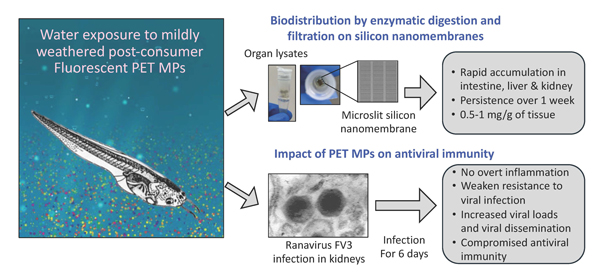Biodistribution and biological impact of microplastics in water
Biodistribution and biological impact of microplastics in water
Project Team
 Jacques
Jacques
Robert Francisco De Jesus Andino
Francisco De Jesus Andino Rosebell
Rosebell
Onuma Rachel
Rachel
Lombardo
Project Description
The objectives of Project 3 are to determine the biodistribution and biological impacts of microplastics water contaminants using a sensitive and reliable experimental platform in the amphibian Xenopus. The overreaching hypothesis is that developmental exposure to microplastics will induce long-term perturbations of immune homeostasis, chronic inflammation, decreased resistance to microbial pathogens and poorer antimicrobial immunity.
Research Questions
- Studying Xenopus laevis tadpoles and frogs, a well-studied model organism relevant for human health.
- Where do microplastics accumulate in the tadpole and frog’s bodies? How do environmental conditions such as temperature affect this?
- How do microplastics affect immune system development and resistance to pathogens?

Products/Resources
- 'What can frogs teach us about human health?’ – view the infographic on the Resources page
- Cai, B., Andino, F. D. J., McGrath, J. L., Romanick, S. S., & Robert, J. (2024). Ingestion of polyethylene terephthalate microplastic water contaminants by Xenopus laevis tadpoles negatively affects their resistance to ranavirus infection and antiviral immunity. Environmental Pollution, 356, 124340. https://doi.org/10.1016/j.envpol.2024.124340